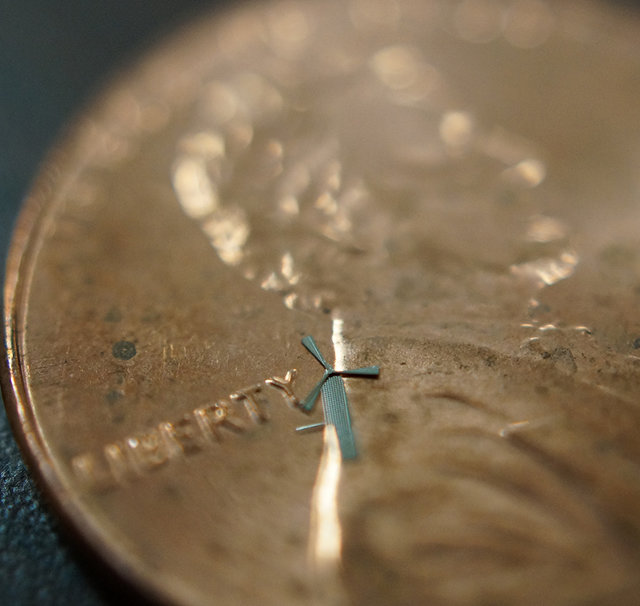Could Wind Power’s Future Be Windmills On A Grain Of Rice?
This new windmill measures less than 2 millimeters in diameter, making it useful in places where bulky turbines don't work.
Wind power is big. Very big. The turbines have steadily grown from the scale of old-fashioned windmills to having blades the size of football fields.
Being big has its advantages--namely generating a lot of power. But researchers J.-C. Chiao and Smitha Rao at the University of Texas in Arlington think there could be advantages at the other end of the scale. They’ve developed a tiny windmill with a diameter of 1.8 mm, that could potentially be used in settings where windpower has so far been implausible.
“I think it could be integrated together with a solar panel,” says Chiao, an electrical engineering professor. “Solar panel use for the day and wind use at night.”

The idea started in Chiao’s garden, near the Dallas-Fort Worth airport. “Every weekend I was in the garden, and there's a lot of wind blowing, and I kept thinking, ‘How can I harvest this energy?’” says Chiao. “I kept thinking if I could make a small windmill, maybe I could use them for a sensor or for lighting.” Chiao’s research group makes miniature medical devices, and was about to pay their Taiwanese partner WeeMEMS to fabricate some surgical micro-tweezers. They had extra room in the layout, and were able to squeeze in 10 different windmill designs at no extra cost. “We always try to use as much space as possible,” says Chiao.
Once the windmills came back from Taiwan, they tested those that survived shipping in the lab, subjecting them to artificial winds to see if they wouldn’t break and would spin reliably. According to Chiao, every design worked.
Still, spinning in a lab doesn’t mean they’re necessarily viable for generating power. “It's difficult for us to say how much energy we can capture,” says Chiao. “I think that part remains to be optimized by engineers.” Beyond the question of how much energy is generated and how to efficiently capture it, the physics of propellors are different at the millimeter scale. “For a big windmill you don't worry about dust sticking on the blades, but for this if you have dust that jams between the rotor, the windmill will not work,” says Chiao.
But the challenges of small scale go hand in hand with the possibility of large quantities. With thousands of windmills, Chiao notes, “Even if some windmills get damaged, I still have many working.” That redundancy could be an asset in harsh environments with little sun to run a solar panel. “Things like that we are thinking are more suitable than trying to power your refrigerator,” says Chiao.

0 Comments